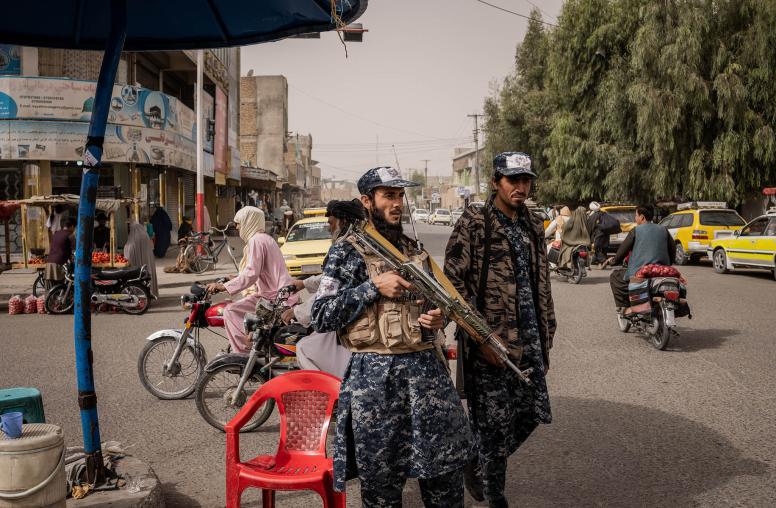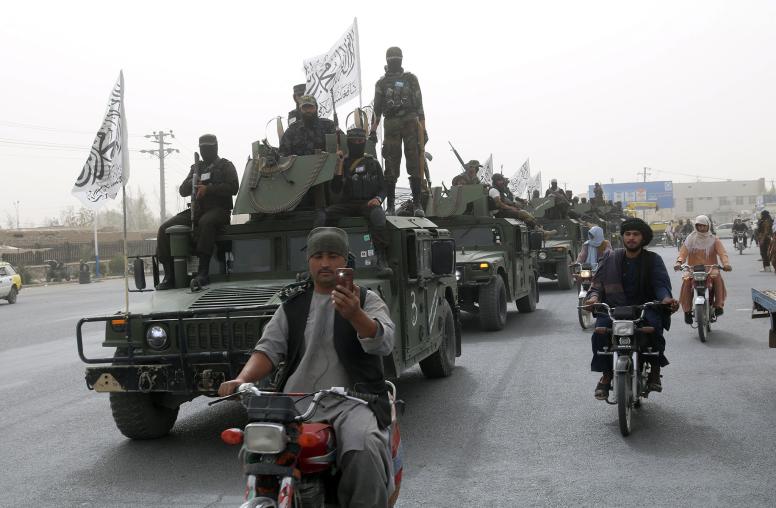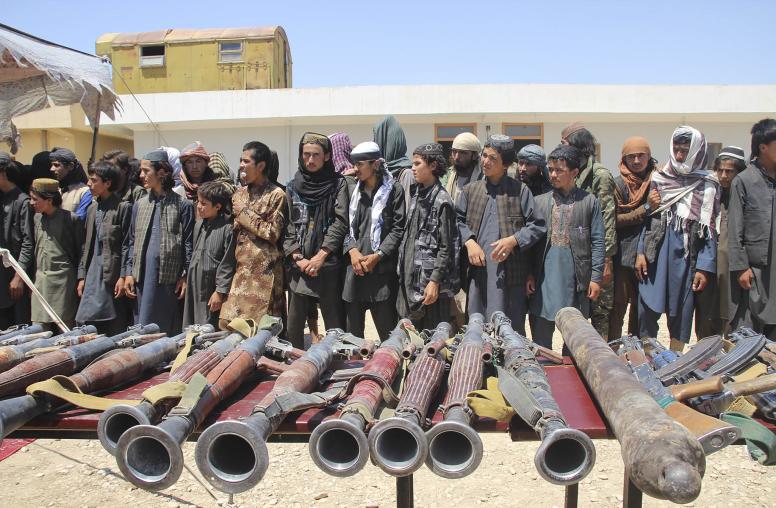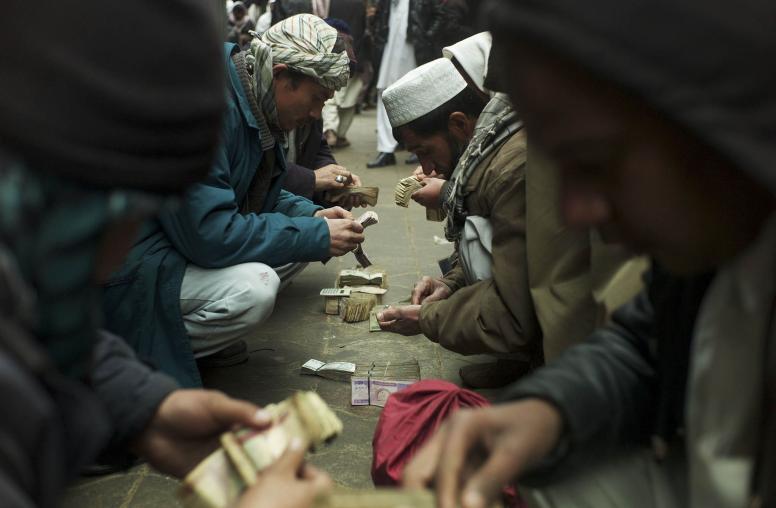After nearly a decade, I recently visited Afghanistan for the first time since serving at the U.S. Embassy in Kabul from 2009-2011 as an officer with the State Department. When I was last there, the fighting between Taliban insurgents and Afghan and international forces was intense and peace seemed far off. My days were spent working long hours at the embassy, and my nights were spent working on a book about violent and nonviolent resistance, a project which changed my life. Today, talks between the Taliban and the U.S.—and recently between the Taliban and Afghan leaders—have renewed hope for peace after decades of conflict. What role can civil resistance play amid the steady stream of violence in Afghanistan?
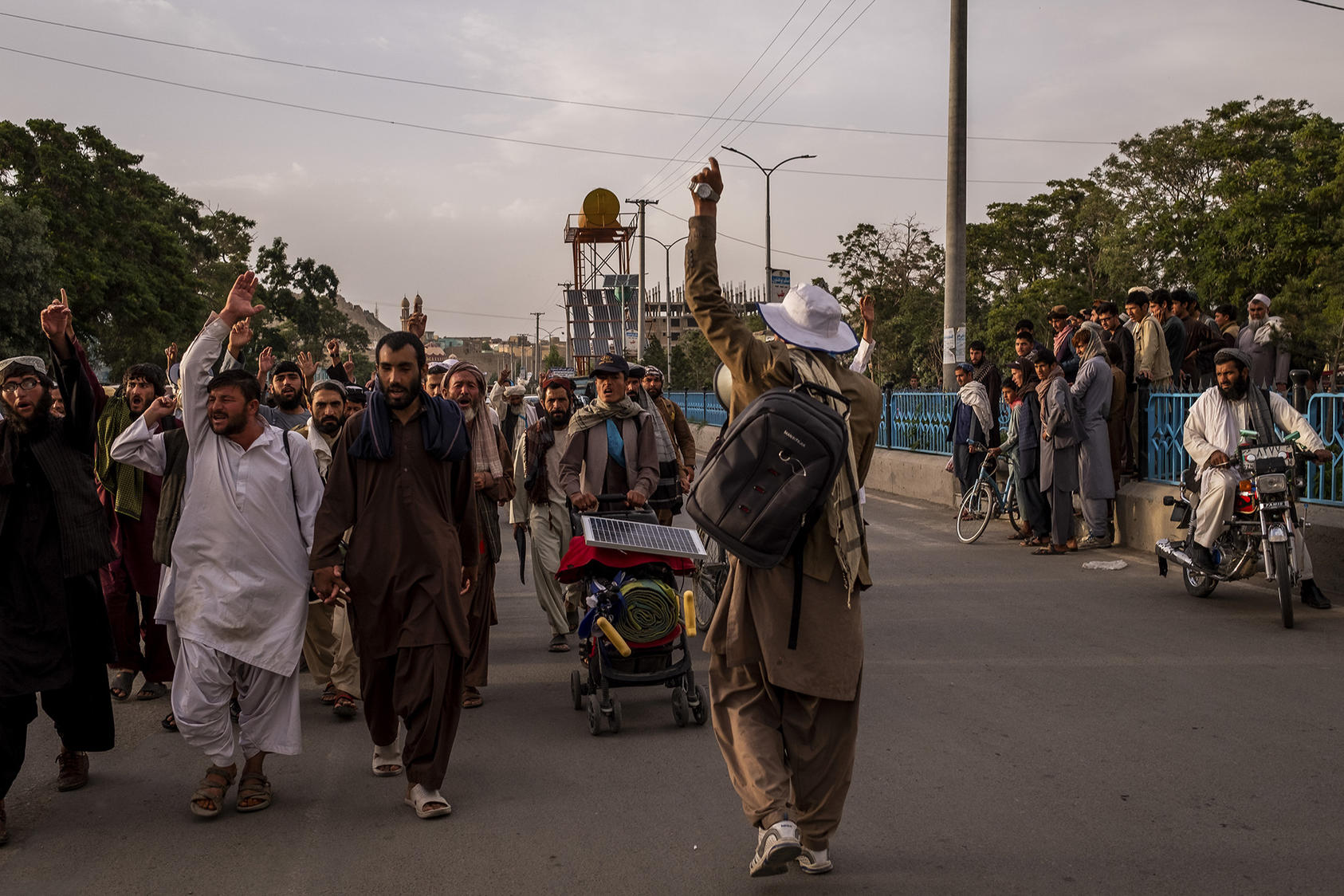
The book I was working on then, Why Civil Resistance Works, which I co-wrote with Erica Chenoweth, examined all major violent and nonviolent campaigns from 1900-2006, with cases ranging from the Gandhi-led independence movement to the Ukrainian Orange Movement. We wanted to systematically test which form of resistance, violent or nonviolent, had been more effective at challenging the most formidable foes.
The main finding was that the nonviolent campaigns using boycotts, protests, strikes and other nonviolent tactics had been twice as effective as violent insurgencies—they achieved their goals 53 percent of the time compared to 26 percent for violent campaigns. We also found that political transitions driven by civil resistance led to democratic outcomes 57 percent of the time, versus 6 percent for transitions driven by armed insurgencies. Nonviolent resistance was much less likely to lead to civil war compared to violent insurrections, and more likely to advance social and economic development. In both the short and longer term, nonviolent resistance had the comparative advantage over violence.
How Nonviolent Action Can Reinforce Peace Efforts
It was surreal to be writing a book about nonviolence amid the U.S. troop surge in Afghanistan. I lived in a shipping container (or “hootch” as they were popularly known) in the shared embassy-USAID compound. At least once a month, the duck and cover alarm would sound, alerting us to danger and forcing us to shelter in place and wait for the threat to pass. That usually meant a mortar round landing somewhere close to the embassy or a suicide bombing or complex attack happening in the vicinity.
Eight years later, the situation in Afghanistan remains highly unstable even amid the ongoing peace talks. With nearly 4,000 civilians killed last year, 2018 was the deadliest year for civilians on record. Talks between U.S. Special Representative for Afghanistan Reconciliation Zalmay Khalilzad and the Taliban, quickly gained momentum at the end of 2018 and injected some cautious hope, but they haven’t made much headway in recent months. Meanwhile, the recent intra-Afghan talks in Doha between Taliban officials and key influencers in the Afghan government and civil society yielded a basic roadmap for peace, which even skeptics are regarding with optimism.
As I returned to Kabul to join USIP colleagues in meeting with Afghan activists, students, and other civic leaders to discuss how people power can reinforce the tenuous peace process, three key findings from Why Civil Resistance Works struck me as particularly relevant for this current moment. While the peace talks take place with senior U.S., Afghan and Taliban officials, ordinary Afghans can join together to demand an end to decades of conflict. These findings explain why and how civil resistance can work—even in a place like Afghanistan.
First, we found that civil resistance has often succeeded in places where you’d think it would fail. Nonviolent campaigns achieved their goals in places where regime violence was brutal, where poverty was high, and where societies were divided. Structural conditions matter, but the strategies and tactics used by the protesters can matter more. While our research focused on campaigns targeting incumbent regimes, other studies of civil resistance to intra-state conflicts, in places like Liberia, Nepal, and Colombia, have found that broad-based nonviolent movements have successfully pressured warring parties to end civil wars.
Afghanistan’s History of Nonviolence
Afghanistan has a rich history of nonviolent resistance. In the 1930s, the Pashtun-led Khudai Khidmatgar (Servants of God) movement drove a sustained campaign of nonviolent resistance against the British colonial regime. Led by Bacha Khan, Khudai Khidmatgar, was the first nonviolent army in the history of the world. More recently, the Tabassum movement, launched after the killing of seven Hazaras in 2015, mobilized activists from all major ethnic groups to express frustration over the security situation. The Enlightenment movement, led by Hazaras to protest the re-routing of a power line from Turkmenistan, organized a series of protests, including one in 2016 that was attacked by suicide bombers. The Uprising for Change, a Tajik-led movement, has led rallies accusing the Afghan government of incompetence and for discriminating against non-Pashtun ethnic groups. These youth-led protests encouraged civic action but were unable to sustain themselves.
In March 2018, a grassroots peace movement emerged in Afghanistan in the wake of a gruesome Taliban attack in Lashkar Gah, in Helmand province. The People’s Peace Movement (PPM) first erected a tent in Lashkar Gah to rally people, eventually culminating in a 300-mile march to Kabul in the scorching heat that included members of various tribes, ages, and villages. The marchers, whose slogan was “the people want peace,” demanded a cease-fire and talks between the Afghan government and Taliban and launched sit-ins outside foreign embassies. PPM members have led marches to various parts of the country, including to Taliban-controlled areas, to demand a cease-fire and peace talks.
A founding member of PPM, Iqbal Khyber, a pharmacist and journalist by training, told us that he had “read books about nonviolence” and was inspired by Bacha Khan. After the attack in Lashkar Gah, he and a small group of friends committed to building a civic movement. “We knew we needed to do something,” Khyber said, adding, “We realized that nonviolence is the most powerful voice.”
“[The] first goal is to allow people to experience nonviolence,” and the second goal of the PPM, according to Khyber, “is to smash the psychological barrier between Afghans in government and in Taliban-controlled areas.” The movement has experienced pressure by various political groups, including the Taliban’s recent detention of PPM members in Helmand. This grassroots peace movement arguably played a noteworthy, albeit unheralded role in jumpstarting the recent peace talks.
Building Broad-Based Movements
A second major finding of Why Civil Resistance Works was that a key determinant of the success of movements was their ability to attract large and diverse participation. Nonviolent movements attracted, on average, 11 times the number of participants as violent campaigns because the moral, physical, and information barriers are much lower. Whereas insurgencies rely on young, able-bodied men, in nonviolent resistance women, children, persons with disabilities, and the elderly can all join in campaigns that draw on hundreds of different tactics, ranging from the wearing of symbols to consumer boycotts.
Currently the PPM, which refuses foreign funding, is seeking to expand its presence in all provinces of the country. PPM recruits people through village mosques and by using Facebook to promote its activities. While critics accuse the movement of being dominated by people from one particular region, Khyber told us that its members have marched to the north, where other ethnic groups are concentrated, to engage these groups and encourage unity for peace. Building a truly cross-tribe, cross-ethnic movement will take time and strategic planning; if the PPM achieves this it would be a major feat.
We also know that women have been critical participants in nonviolent movements including those, like in Liberia, that helped end a civil war. Afghan women, not surprisingly, have been in the forefront of citizen-led efforts to advocate for peace. Women’s groups like the Afghan Women’s Network and women religious leaders have demanded inclusion in the peace process and are insisting that their rights be protected in any future peace agreement. While the PPM has included women, there may be opportunities for further women’s participation and leadership through the PPM’s leadership shura, provincial assemblies, local committees, and overall activities. If the PPM is able to join forces with women and youth movements across the country, it could become a truly powerful source of pressure for peace.
Skills and Strategy
Finally, our book highlighted the importance of skills and strategy to determining the outcome of nonviolent campaigns. Building strong and effective movements requires skills in conflict analysis, in dialogue and negotiation, in community organizing and coalition building, and in the strategic sequencing of nonviolent direct action tactics. The ability to develop an inclusive vision, to resolve internal disputes within a movement, and to expand participation in mass action campaigns are keys to achieving success.
In Afghanistan, the PPM and other movements have helped generate citizen participation and momentum for peace. Their efforts could be bolstered by a greater focus on strategy and strategic planning. Training in effective organizing and movement-building, as well as collective visioning and facilitated strategic planning, could support greater movement cohesion and the inclusion of more Afghans. USIP is supporting this kind of work by partnering with local Afghan universities to facilitate workshops on synergizing nonviolent action and peacebuilding across the country, building on local examples and historical experiences with nonviolent action.
After returning to Afghanistan for the first time in nearly a decade, I am reminded of one important thing: In many places where the conventional wisdom suggested that only violence could prevail, mass movements led by unarmed civilians confronted formidable odds and won.
After returning to Afghanistan for the first time in nearly a decade, I am reminded of one important thing: In many places where the conventional wisdom suggested that only violence could prevail, mass movements led by unarmed civilians confronted formidable odds and won. It is not strange for me to imagine that people power in Afghanistan could help escalate the pressure to end the civil war and win an inclusive peace that respects the rights of all its citizens. My recent visit revealed that even this generation who has grown up knowing nothing but war are organizing for a just and peaceful Afghanistan. There is a force more powerful than violence, and that force could one day prevail in Afghanistan.
